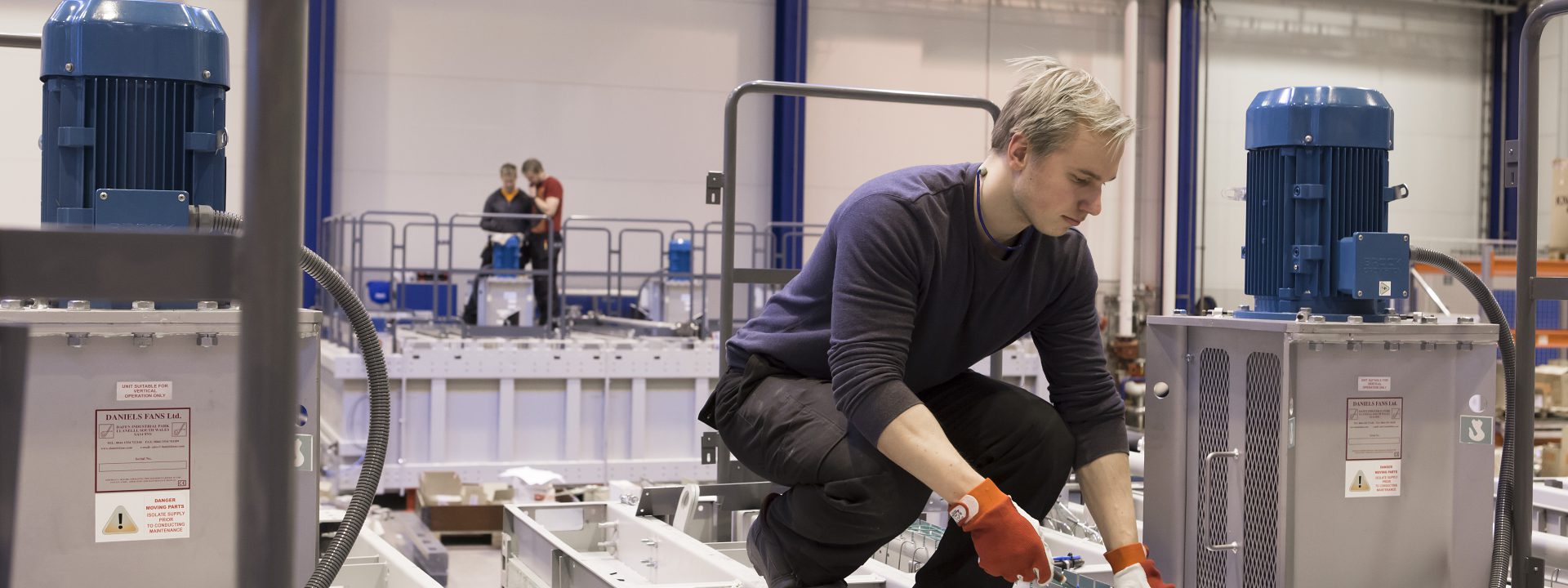
Blowers are critical components in flat tempering lines, driving quenching air into the chiller section to keep production flowing smoothly. Each line normally has an average of two of quench blowers with a lifetime of 10 years and two of convection blowers with a lifetime of 5 years. If a blower breaks, production stops in most cases. It may take a painfully long time to get the blower and the entire glass tempering line up and running again, causing an expensive interruption in glass processing.
Although blower fans are engineered for a safe and economical operation, it is important to maintain them to ensure safe and reliable operation of glass processing machines due to the physical fatigue and creep phenomena of all metallic structures, which also apply to fans.
Fatigue is the gradual weakening of metal due to stress load changes, resulting from cyclic use – in this case, steel parts. It has a cumulative effect over longer periods of time and is more clearly present in certain critical spots of the impeller. The welds, and the leading and trailing edges of the blades, are especially more subject to fatigue. Creep is static and invisible in nature and results from high temperatures and a continuous static load.
Wear can be described as an unavoidable result of motion. Moving parts such as bearings wear down over time. This can happen under normal operation or as a result of improper use. If left unobserved or uncorrected, fatigue, creep and wear may lead to failures in the critical components and cause unexpected, costly downtime in the glass tempering process.
Fatigue is fortunately predictable. Knowing the construction of the blowers, an estimate can be made of the long-term fatigue levels of the components. This in itself can provide a maintenance plan, which helps prepare for servicing.
Although the gradual wear of bearings is not quite as simple to predict, it can, however, be observed and measured in operation. This gives an idea of the condition of the bearings to make a lifetime estimate.
If the components are already fatigued, there are still a few options. The initial cracks need to be inspected in time and minimized. Although the fatigue resistance of the components cannot be improved, the use of the blower can temporarily be continued. Preventative measures can also be taken: for example, knowledge of the dynamics at play helps identify the stall areas of blower operation, minimizing the risk of damage.
Leading suppliers such as Glaston have started offering services that proactively maintain and inspect the blowers on existing tempering lines. This enables glass processors to act ahead of time and have a better understanding of the condition of their blowers.
A thorough inspection of the blowers is done with as little downtime as possible. Only 2–3 hours are required per blower. The recommended time interval for this blower inspection is once a year. A comprehensive report of the blower’s condition is provided after the inspection.
Upgraded vibration monitoring equipment for your blower bearings is now also available from suppliers like Glaston. In addition to the annual inspections, this measuring device provides continuous online vibration and temperature measurement of the blower bearings, increasing blower safety and improving condition predictability.
For glass processors, this new service helps keep their tempering lines operating at peak efficiency. The operational lifetime of the blower can be extended, the risk of an unexpected tempering line breakdown due to a faulty blower is minimized and overall safety of the production facility improved considerably.
It is important that all inspection and maintenance work is handled by a professional team with the required technical expertise to ensure your blowers and their impellers can add to the success of your glass processing business – and not become a risk or obstacle.
Sign up for Glastory newsletter
We answer your questions about glass processing. Let us know your challenges and we promise to do our best to help you.
Comments are closed.